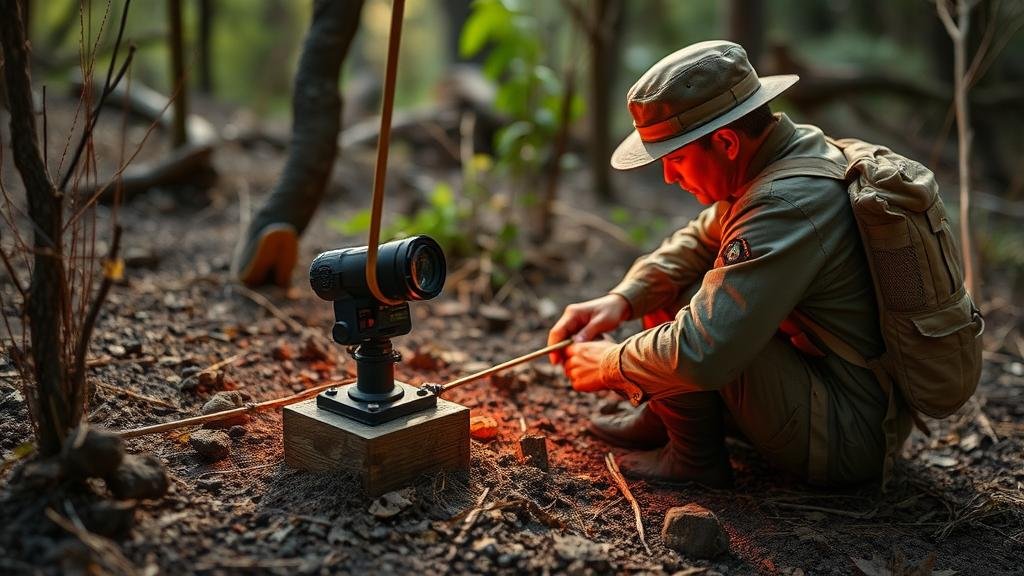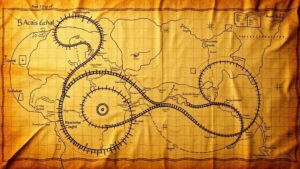Spotting Traps Triggered by Heat, Light, or Motion in Modern Treasure Hunting
Spotting Traps Triggered by Heat, Light, or Motion in Modern Treasure Hunting
Treasure hunting is an increasingly popular pursuit that involves seeking out hidden valuables, artifacts, or historical items. With the advancement of technology, modern treasure hunters are equipped with sophisticated tools that can locate treasures effectively. But, many treasure sites come with a variety of traps designed to protect the hidden items. e traps may be triggered by heat, light, or motion. This article provides an in-depth examination of these traps, how they operate, and how to effectively detect and navigate them.
Understanding Trap Mechanisms
Modern traps set to protect treasures are often technologically advanced but still rely on fundamental principles of physics and biology. The three most common triggers–heat, light, and motion–are the mechanisms through which these traps operate. Understanding these triggers is vital for any treasure hunter looking to avoid a potentially dangerous situation.
Heat-Activated Traps
Heat-activated traps respond to the change in temperature typically caused by a human presence. These traps can include infrared sensors that detect body heat. When a person approaches, the sensor is triggered, activating an alarm or even a physical countermeasure such as a gas or spring mechanism.
- Example: In many archaeological sites, integrated heat sensors are employed to safeguard valuable artifacts. Such sites may use advanced thermal cameras to detect intruders, sending alerts to security systems if unauthorized heat signatures are noted.
- Case Study: A treasure hunter in Mexico encountered an ancient temple outfitted with heat-sensitive mechanisms. By utilizing thermal imaging cameras, the hunter was able to map out the heat signatures, successfully navigating around potential traps to access the treasure without triggering alarm systems.
Light-Activated Traps
Light-activated traps utilize photoelectric sensors or laser grids. When a light beam is interrupted or altered, the system registers this change and can initiate an alarm or deploy a defensive mechanism. e traps often rely on the detection of physical movement or alterations in natural light patterns.
- Example: Enhanced security cameras equipped with light detection can safeguard significant treasure caches in urban environments. Strategies such as low-light surveillance technologies help in monitoring for any disturbances that might trigger the system.
- Case Study: In an urban exploration of an abandoned bank, a treasure hunter encountered an intricate grid of laser beams. By using reflective materials to manipulate the beams, the hunter was able to bypass the security system, revealing a hidden vault without setting off alarms.
Motion-Activated Traps
Motion-activated traps are among the oldest forms of security mechanisms. e traps often rely on sonar, radar, or simple mechanical systems. They are designed to trigger an alarm when they sense movement within a certain detection radius.
- Example: Advanced motion detectors can filter out small animals or environmental movement, focusing on larger bodies, like humans, to activate defenses. These systems are prevalent in historical sites, protecting treasures from both natural decay and theft.
- Case Study: A team of treasure hunters exploring an ancient ruin faced several motion-detection systems. By using specialized equipment that mimicked environmental rhythms (such as timing movements with wind patterns), they successfully retrieved artifacts without triggering the traps.
Detection Techniques and Tools
Knowing the types of traps is only half the battle; employing the right techniques and tools to detect these traps is essential for modern treasure hunters. Let’s explore some of the crucial techniques and their applications.
Using Technology for Detection
Modern treasure hunters have access to an array of technology and gadgets that aid in the detection of traps. These technologies can significantly reduce risks and enhance the chances of a successful treasure hunting expedition.
- Thermal Imaging: This technology enables hunters to visualize temperature differences, which can reveal heat-activated traps. For example, ENVI and FLIR systems are widely used in the field.
- Laser Detectors: Utilizing devices that can detect changes in light beams helps alert treasure hunters to the presence of light-sensitive traps. Systems like laser range finders can help map trap locations before entering a site.
Physical Inspection Techniques
Also to technological aids, physical inspections can prove invaluable. Subtle indicators, such as changes in surface texture or unusual formations, are critical to identifying traps. Physically probing areas with tools or devices can reveal hidden mechanisms without triggering them.
- Example: Using long poles or flexible wires, hunters can test for hidden wires or supports in areas that appear suspicious.
- Case Study: In a remote Italian villa, a group determined the existence of motion-triggered traps by gently stirring the air with lightweight materials that would not set off the sensors. They successfully identified a pathway through a previously secured area.
Actionable Takeaways
As modern treasure hunting evolves, understanding and navigating traps triggered by heat, light, or motion becomes paramount. Here are some takeaways to ensure safe and successful expeditions:
- Familiarize yourself with the types of traps you may encounter and their operational mechanisms.
- Use technology such as thermal imaging and laser detectors to identify and avoid traps.
- Conduct thorough physical inspections employing subtle probing techniques to detect hidden mechanisms.
- Always prioritize safety by informing others of your location and entry points when exploring potentially hazardous sites.
By arming themselves with knowledge about these traps and the appropriate detection methods, modern treasure hunters can navigate the complexities of their pursuits with greater success and less risk.



